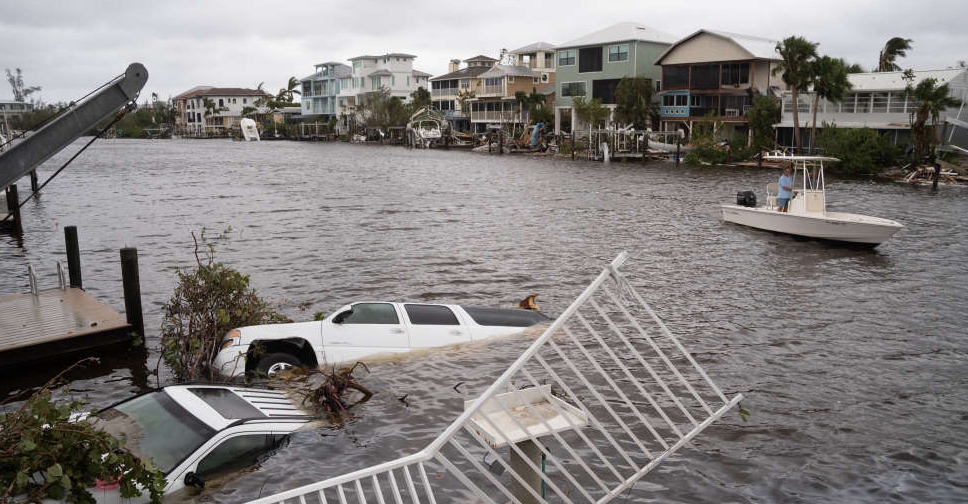
Emergency crews tried on Thursday to reach stranded Florida residents as a resurgent Hurricane Ian veered toward the Carolinas after cutting a path of destruction across Florida, leaving behind deadly floodwaters, downed power lines and widespread damage.
Ian, one of the strongest storms ever to hit the U.S. mainland, flooded Gulf Coast communities and knocked out power to millions before plowing across the peninsula to the Atlantic Ocean, where it regained strength ahead of another anticipated landfall in South Carolina on Friday afternoon.
Florida's death toll remained uncertain amid scattered reports of casualties. At an evening news briefing, Governor Ron DeSantis acknowledged some people had perished but warned against speculating before official confirmation.
"We fully expect to have mortality from this hurricane," he said.
President Joe Biden, speaking earlier at Federal Emergency Management Agency (FEMA) headquarters in Washington, said Ian could prove to be the deadliest in state history.
"The numbers are still unclear, but we're hearing early reports of what may be substantial loss of life," Biden said.
In hard-hit Charlotte County, a spokesperson for the sheriff's department confirmed multiple deaths but did not have a firm figure. Authorities in Sarasota County were investigating two possible storm-related deaths, a sheriff's spokesperson said.
A 72-year-old man in Deltona in central Florida died after he went outside during the storm to drain his pool, authorities said.
More than 2.3 million homes and businesses in Florida remained without power, according to tracking website PowerOutage.us.
Georgia, South Carolina and North Carolina were bracing for impact as Ian - which weakened to a tropical storm during its trek across Florida - returned to hurricane strength by 5 p.m. ET (2100 GMT) after moving into the Atlantic Ocean, with maximum sustained wind speeds of 75 miles per hour (120 kph), the U.S. National Hurricane Center said.
The storm was forecast to make landfall again about 2 p.m. ET (1800 GMT) on Friday north of Charleston. A hurricane warning was in effect for hundreds of miles of coastline from the South Carolina-Georgia border north to Cape Fear, North Carolina.
Ian was expected to bring potential life-threatening storm surges and possible tornadoes to the region on Friday, the National Weather Service said.
In South Carolina, Mercedes Benz MBGn.DE, Boeing Co BA.N, and the seaports that support manufacturers will suspend operations on Friday.
Charleston is particularly at risk, according to a city-commissioned report released in November 2020, which found about 90% of all residential properties were vulnerable to storm surge flooding.
North Carolina Governor Roy Cooper urged residents to "take necessary precautions," warning of possible flooding, landslides and tornadoes.
"This storm is still dangerous," Cooper said.

 Eight die, seven injured in Serbian retirement home fire
Eight die, seven injured in Serbian retirement home fire
 South African police launch manhunt for gang leader of illegal mine
South African police launch manhunt for gang leader of illegal mine
 Biden welcomes Gaza ceasefire as aid trucks rush to help civilians
Biden welcomes Gaza ceasefire as aid trucks rush to help civilians
 Gaza ceasefire comes into effect after hostage names released
Gaza ceasefire comes into effect after hostage names released
 Nigeria tanker truck blast toll rises to 86
Nigeria tanker truck blast toll rises to 86




